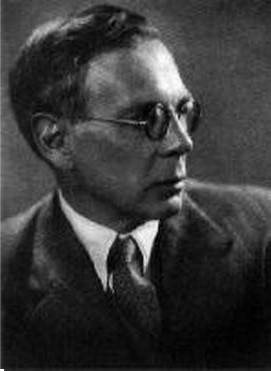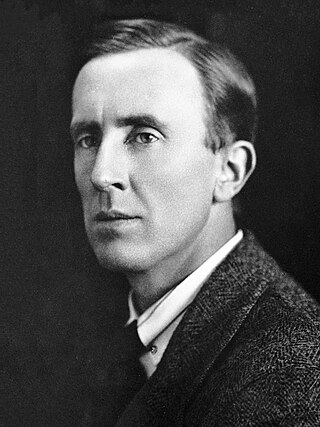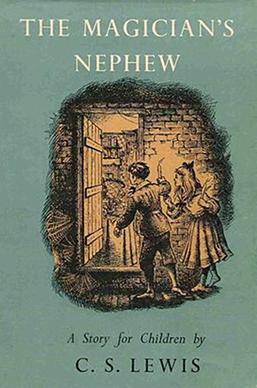Related Research Articles
Clive Staples Lewis, was a British writer, literary scholar, and Anglican lay theologian. He held academic positions in English literature at both Magdalen College, Oxford (1925–1954), and Magdalene College, Cambridge (1954–1963). He is best known as the author of The Chronicles of Narnia, but he is also noted for his other works of fiction, such as The Screwtape Letters and The Space Trilogy, and for his non-fiction Christian apologetics, including Mere Christianity, Miracles, and The Problem of Pain.

Charles Walter Stansby Williams was a British poet, novelist, playwright, theologian and literary critic. Most of his life was spent in London, where he was born, but in 1939 he moved to Oxford with the university press for which he worked and was buried there following his early death.

John Ronald Reuel Tolkien was an English writer and philologist. He was the author of the high fantasy works The Hobbit and The Lord of the Rings.

The Inklings were an informal literary discussion group associated with J. R. R. Tolkien and C. S. Lewis at the University of Oxford for nearly two decades between the early 1930s and late 1949. The Inklings were literary enthusiasts who praised the value of narrative in fiction and encouraged the writing of fantasy. The best-known, apart from Tolkien and Lewis, were Charles Williams, and Owen Barfield.

The Magician's Nephew is a portal fantasy children's novel by C. S. Lewis, published in 1955 by The Bodley Head. It is the sixth published of seven novels in The Chronicles of Narnia (1950–1956). In recent editions, which sequence the books according to Narnia history, it is volume one of the series. Like the others, it was illustrated by Pauline Baynes whose work has been retained in many later editions. The Bodley Head was a new publisher for The Chronicles, a change from Geoffrey Bles who had published the previous five novels.
The English philologist and author J. R. R. Tolkien created several constructed languages, mostly related to his fictional world of Middle-earth. Inventing languages, something that he called glossopoeia, was a lifelong occupation for Tolkien, starting in his teens.

Morgoth's Ring (1993) is the tenth volume of Christopher Tolkien's 12-volume series The History of Middle-earth in which he analyses the unpublished manuscripts of his father J. R. R. Tolkien.
The Lhammas is a work of fictional sociolinguistics by J. R. R. Tolkien. It was published in The Lost Road and Other Writings (1987), volume five of The History of Middle-earth series. The word lhammas is a Noldorin word meaning “account of tongues”. In Tolkien's later development of Sindarin he changed the rules governing initial l- and r- whereby they ceased being devoiced, resulting in the word becoming lammas.

Arthur Owen Barfield was a British philosopher, author, poet, critic, and member of the Inklings.
The Dark Tower is an incomplete manuscript written by C. S. Lewis that appears to be an unfinished sequel to the science fiction novel Out of the Silent Planet, though allegations have been raised about its authenticity. Perelandra instead became the second book of Lewis' Space Trilogy, concluded by That Hideous Strength. Walter Hooper, Lewis' literary executor, titled the fragment and published it in the 1977 collection The Dark Tower and Other Stories. The Lewis scholar Kathryn Lindskoog challenged the authenticity of the work.
The Space Trilogy is a series of science fiction novels by C. S. Lewis. The trilogy consists of Out of the Silent Planet (1938), Perelandra (1943), and That Hideous Strength (1945). A philologist named Elwin Ransom is the protagonist of the first two novels and an important character in the third.
Mythopoeia, or mythopoesis, is a narrative genre in modern literature and film where an artificial or fictionalized mythology is created by the writer of prose, poetry, or other literary forms. The concept was introduced by J. R. R. Tolkien in the 1930s. The authors in this genre integrate traditional mythological themes and archetypes into fiction. Mythopoeia is also the act of creating a mythology.
The Elvish Linguistic Fellowship is a "Special Interest Group" of the Mythopoeic Society devoted to the study of J. R. R. Tolkien's constructed languages, headed by the computer scientist Carl F. Hostetter. It was founded by Jorge Quiñónez in 1988.

A Secret Vice, also known as A Hobby for The Home, is the title of a lecture first presented by English philologist and author J. R. R. Tolkien in 1931. The lecture concerns Tolkien's relations with and view on constructed languages, in particular on artistic languages. In the talk, Tolkien discusses the human desire to make languages, and his criteria to create a good language – these included phonoaesthetics and the presence of a mythology to accompany the language. Tolkien's presentation was the first instance of him openly exhibiting his hobby of conlanging, and includes examples of several of his languages.
J. R. R. Tolkien's fantasy books on Middle-earth, especially The Lord of the Rings and The Silmarillion, drew on a wide array of influences including language, Christianity, mythology, archaeology, ancient and modern literature, and personal experience. He was inspired primarily by his profession, philology; his work centred on the study of Old English literature, especially Beowulf, and he acknowledged its importance to his writings.

The Road to Middle-Earth: How J. R. R. Tolkien Created a New Mythology is a scholarly study of the Middle-earth works of J. R. R. Tolkien written by Tom Shippey and first published in 1982. The book discusses Tolkien's philology, and then examines in turn the origins of The Hobbit, The Lord of the Rings, The Silmarillion, and his minor works. An appendix discusses Tolkien's many sources. Two further editions extended and updated the work, including a discussion of Peter Jackson's film version of The Lord of the Rings.
This is a list of writings by C. S. Lewis.

Steven A. Beebe is an American professor of communication. He is a communication and C. S. Lewis scholar who discovered a fragment of an unpublished manuscript started by C.S. Lewis that was to be co-authored by J. R. R. Tolkien about communication. Beebe is Regents' and University Distinguished Professor Emeritus of Communication Studies at Texas State University, San Marcos. Beebe has more than 60 published articles and book chapters. He is also the author or co-author of 14 books that have been used at hundreds of colleges and universities. He is past president of the National Communication Association and played a leadership role in developing the Russian Communication Association.

Tolkien: Maker of Middle-earth is a 2018 art book exploring images of the artwork, illustrations, maps, letters and manuscripts of J. R. R. Tolkien. The book was written by Catherine McIlwaine, Tolkien archivist at the Bodleian Library. It was timed to coincide with an exhibition of the same name, also curated by McIlwaine.

Charles Jared Lobdell was an American author and one of the first Tolkien scholars. He is best known for some thirty academic books on American history and the Inklings including J. R. R. Tolkien, C. S. Lewis, and Charles Williams.
References
- ↑ JRR Tolkien and CS Lewis joint work discovered, The Telegraph, July 19, 2009
- ↑ Beebe discovers unpublished C.S. Lewis manuscript, txstate.edu, University News Service, July 8, 2009
